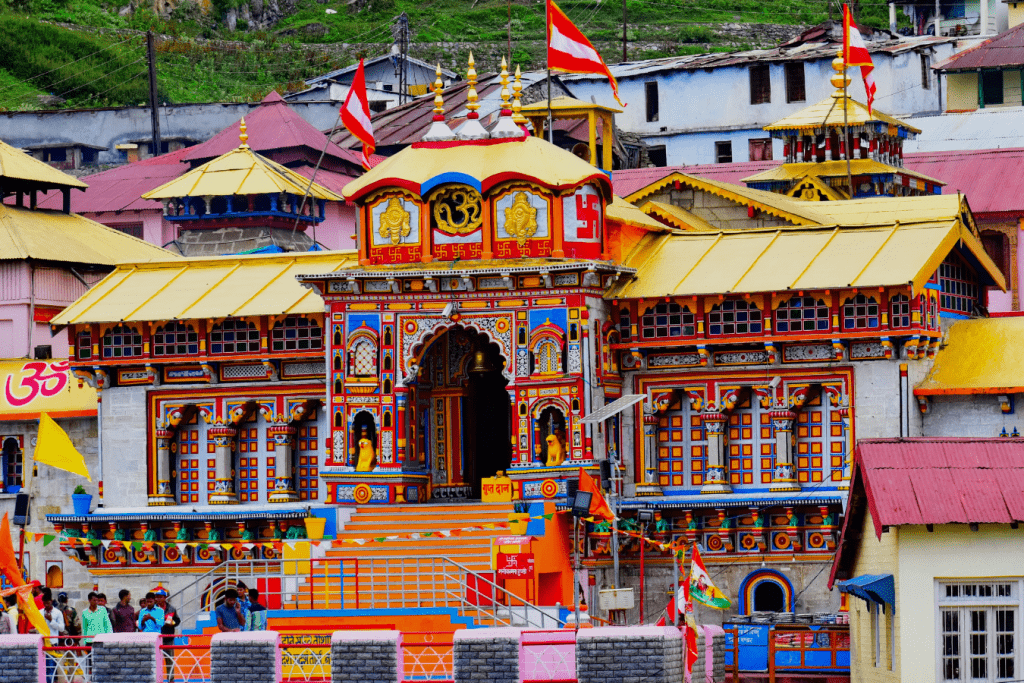If you’re planning a trip to Badrinath, choosing the right time to go can make all the difference. The best time to visit Badrinath is from May to June and again from September to October. During these months, the skies are usually clear, the weather is pleasant, and the roads are safe—giving you the perfect opportunity to enjoy both the spiritual and scenic beauty of the region.

Since Badrinath is located in the high Himalayas, it becomes completely inaccessible during winter. Heavy snowfall blocks the routes, and the temple shuts down for several months. So, before you start packing your bags, it’s important to understand when to go, what kind of weather to expect, and how to prepare for a smooth and memorable journey.
This guide will walk you through everything you need to know about the best time to visit Badrinath, including seasonal weather details and practical travel tips.
When is the Best Time to Visit Kedarnath?
The best time to visit Badrinath is from May to June and September to October. During these months, the weather is pleasant and the roads are safe. The temple will open on May 4, 2025, at 6:00 AM and closes around late November, aligning with the onset of winter and heavy snowfall. It’s best to avoid visiting during the monsoon (July–August) because of rain and landslides.
Temperature & Climate Overview by Season in Badrinath
| Season | Months | Average Temperature | Weather Condition |
| Spring-Summer | May – June | 7°C to 18°C | Pleasant, clear skies, ideal for travel and darshan |
| Monsoon | July – August | 10°C to 17°C | Heavy rainfall, landslide risk, not recommended for travel |
| Post-Monsoon | September – October | 5°C to 15°C | Lush greenery, fewer crowds, calm and comfortable |
| Winter | November – April | -5°C to 10°C | Snowfall, roads blocked, temple closed, extreme cold |
Badrinath Temple Opening & Seasonal Update
- Opening Date 2025: May 4, 2025, at 6:00 AM
- Closing (Tentative): Late November (Temple closes due to heavy snowfall and extreme weather)
- Peak Season: May to June, September to October (Ideal weather and safe travel conditions)
- Off-Season: November to April (Temple closed, extreme cold, and heavy snowfall)
Badrinath Weather in Summer (May and June)
Summer is the most preferred time to visit Badrinath. During these months, the snow starts melting, and the entire valley is alive with blooming flowers and green meadows. The weather is pleasant, making trekking easier, and the skies remain mostly clear, offering breathtaking views of the snow-capped peaks. The cool, sunny days and chilly nights provide the perfect environment for pilgrims and trekkers.

Badrinath Temperature in Summer Months
- May: 5°C – 15°C
- June: 10°C – 20°C
The days are generally cool and sunny, while the nights can get quite chilly. This makes it an ideal time for darshan (spiritual visit) and trekking.
Summer Trip Essentials for Badrinath Yatra
- Warm clothing for chilly nights (even in summer)
- Sunscreen and sunglasses to protect from UV rays at higher altitudes
- Comfortable trekking shoes for hiking around the area
- Basic first aid kit (including altitude sickness medication)
- Water bottles to stay hydrated during the trek
- Personal identification documents and temple entry passes (if required)
Badrinath Weather in Monsoon (July to September)
The monsoon season in Badrinath occurs between July and September, bringing heavy rainfall and an increased risk of landslides. While the lush greenery and rejuvenated landscapes might seem inviting, the rains can create difficult travel conditions, making this an unsafe time to visit. The roads can become slippery, and trekking paths may become hazardous. Additionally, the cloudy skies can obscure the stunning mountain views, diminishing the overall experience.
Badrinath Temperature in Monsoon Months
- July: 10°C – 17°C
- August: 10°C – 17°C
- September: 5°C – 15°C
The days are generally cool and wet, while nights are chilly and damp. Heavy rainfall increases the risk of landslides and road blockages, which can disrupt your travel plans.
Monsoon Trip Essentials for Badrinath Yatra
- Rain gear: Waterproof jackets, ponchos, and sturdy umbrellas
- Waterproof footwear to avoid slipping on wet surfaces
- Lightweight, quick-dry clothing for staying comfortable during rainfall
- Anti-slip trekking shoes for safe travel on slippery paths
- Portable charger to ensure your devices stay powered during wet conditions
- First aid kit with additional items like anti-diarrheal tablets (due to possible water contamination)
Badrinath Weather in Winter (October to March)
Winter in Badrinath lasts from October to March and is characterized by extreme cold, heavy snowfall, and harsh weather conditions. During this period, the region becomes largely inaccessible, and the Badrinath Temple is closed for devotees. The temple is relocated to Joshimath for winter worship. Temperatures drop well below freezing, and the entire area is blanketed in thick snow, making travel dangerous and difficult. Roads become impassable, and the trekking paths are covered in snow, posing risks to travelers.
Badrinath Temperature in Winter Months
- October: 0°C – 10°C
- November: -5°C – 5°C
- December to February: -10°C to -5°C (extremely cold)
- March: -5°C – 5°C
Conclusion
Badrinath is not just a destination—it is a divine experience surrounded by the majestic Himalayas and steeped in spirituality. The best time to visit this holy site is from May to June and September to October, when the weather is favorable, the temple is open, and nature is at its most beautiful. Avoiding the harsh monsoons and winters will ensure a safer, more enjoyable pilgrimage or travel experience.